Reverse Osmosis System Cost 2025: Whole House & Single Tap Cost Analysis
-
Dean Eby
- Last updated:
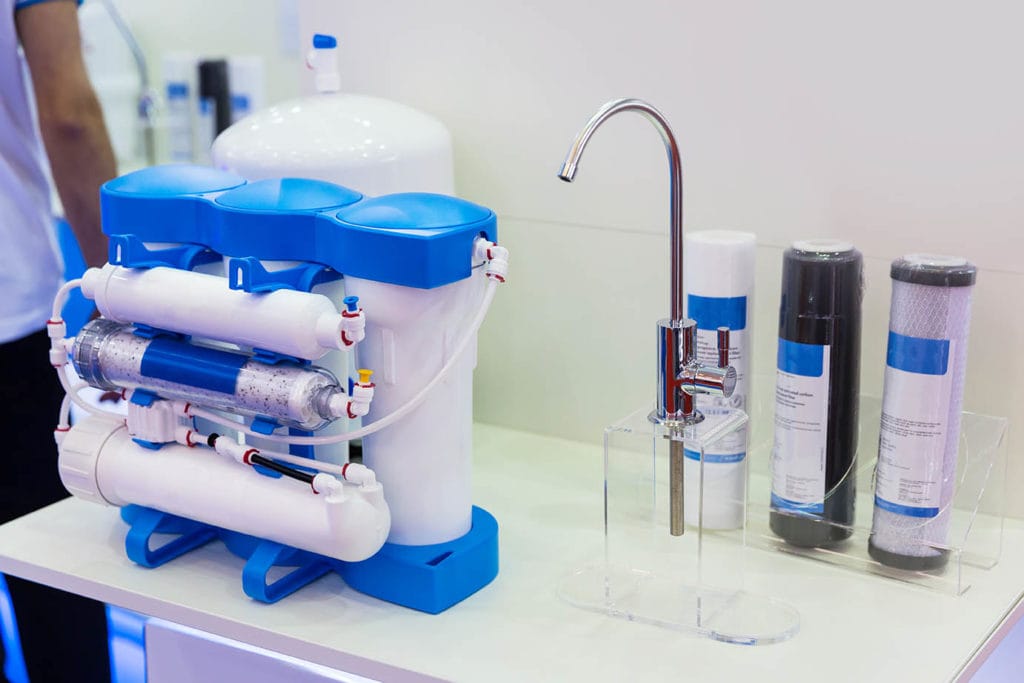
Reverse osmosis is a powerful filtration process that strips everything from your water, leaving behind nothing but pure water. The best systems will even reintroduce some vital minerals back into the water for health and taste. Water is forced through a membrane in a several-stage filtration process. Without any contaminants or minerals in the water, you can say goodbye to hard water spots and bad tastes. Your water will be as pure as possible when it goes through reverse osmosis filtration.
But this type of filtration doesn’t come cheap. You do have some options, however, which we’re going to take a look at in this article. Your choices really boil down to filtration on the whole house or just at a single tap. We’re going to explore the costs associated with both styles of RO filter systems as well as discuss the pros and cons of each to help you determine which is a better choice for your home.
Point of Use Versus Point of Entry Filtration
There are two main types of reverse osmosis systems that you might get in your home. Point of use systems and point of entry systems, which can also be referred to as single tap and whole-house systems respectively.
Point of Use
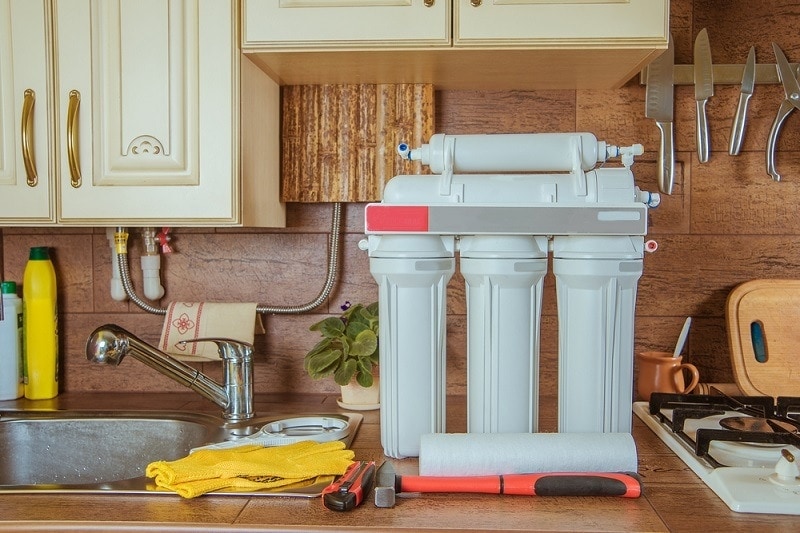
Point of use RO systems only filters the water at a single point of use, such as one faucet. This is great for turning one tap faucet into an endless filtered water spout, but you’ll miss out on the benefits of having RO water in your whole home. On the other hand, point-of-use systems are far cheaper than point-of-entry. They’re also much simpler, so you can feasibly install them yourself. Don’t think you’re limited to sink faucets either. You can get RO shower heads if you still want the benefit of showering in RO water without the cost of a whole-home RO system.
- More affordable than point-of-entry systems
- Simpler and easier to install
- Provides endless RO water at a single tap
- The rest of your home still has regular tap water
Point of Entry
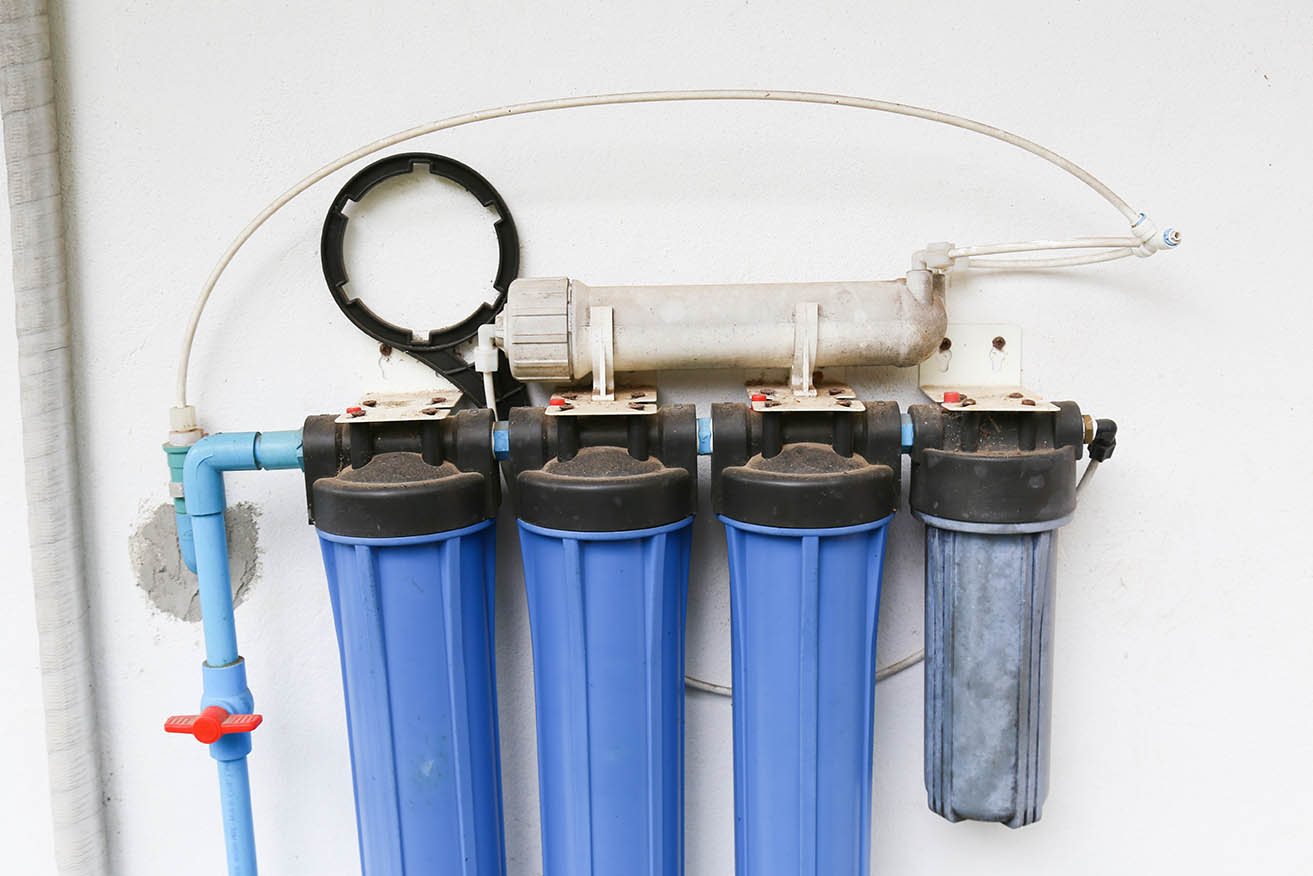
A point of entry system will filter the water where it enters your home, ensuring that all the water in your home is RO filtered. This enables you to get purified RO water at any faucet in your house, which brings some serious benefits. Hard water spots will be a thing of the past. Soap will work better without hard minerals in the water breaking it down, making dishes and laundry easier than ever. The water in your shower will even be better for your skin and could reduce the severity of skin conditions such as eczema or psoriasis.
Naturally, point-of-entry systems are larger and more complicated than point-of-use systems. They’re far costlier and you’ll likely need to get a professional to install it, raising the price even further.
- RO water in your whole home
- No more hard water spots
- Soap works better
- Shower water is easier on skin
- Requires a hefty investment
- You’ll need a pro to install it
What Affects the Price of a Reverse Osmosis System?
When you start looking at different RO systems, you might be surprised at just how large the price range is. Some systems can be purchased for just a couple hundred dollars. On the other hand, certain RO systems sell for over $10,000! That’s a pretty insane gap in price. While many things can affect the price of your system, the following five factors will have the largest effect on the overall cost of your investment.
Size of the System
Naturally, a larger and more complex system is going to cost more than something small and simple. Point-of-use systems such as under-sink RO filters are one of the cheapest options, while systems that filter the entire flow of water in the home will cost considerably more.
Brand Name
Some brands are priced much higher than others. This could be due to reputation, quality, popularity, or many other factors. However, more expensive doesn’t always mean better, so make sure to do some research before just picking the cheapest or most expensive brand. Often, you do get what you pay for, on either end of the spectrum.
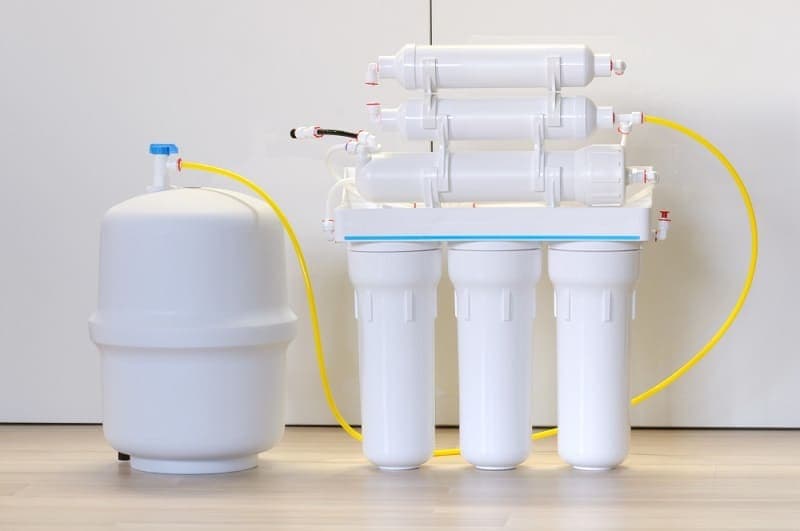
Process of Filtration
The filtration process of different RO systems can be simple or wildly complex. If your system reintroduces vital minerals, for example, it’s going to cost more than a basic system that doesn’t. More stages of filtration also tend to add up to a higher cost.
NSF Certifications
The National Sanitation Foundation or NSF is a third-party company that offers certifications that show a particular product meets a predetermined set of standards regarding sanitation, safety, and quality. The more NSF certifications a system has earned, the higher it will likely cost.
Additional Features
There are lots of ways for you to upgrade an RO system, but each of them is accompanied by an additional cost. You could add a pump to increase pressure and reduce wastewater or add on a remineralization stage to alkalize your water and add vital minerals back in. While many of these are very useful features to have, a system with those features will cost far more than a simple system devoid of the special conveniences.
Single Tap RO System Pricing
Single tap RO systems are the most affordable way to get RO water in your home. You could get a system on a single sink faucet for little more than $100. Since these systems are rather easy to install, you can feasibly do it yourself, saving you the price of paying a professional for installation. Granted, not every point-of-use RO system is that cheap. Even just for a single-faucet system you could still pay over $1000 for a top-of-the-line model. On average, your cost should be between $150 and $1000 installed.
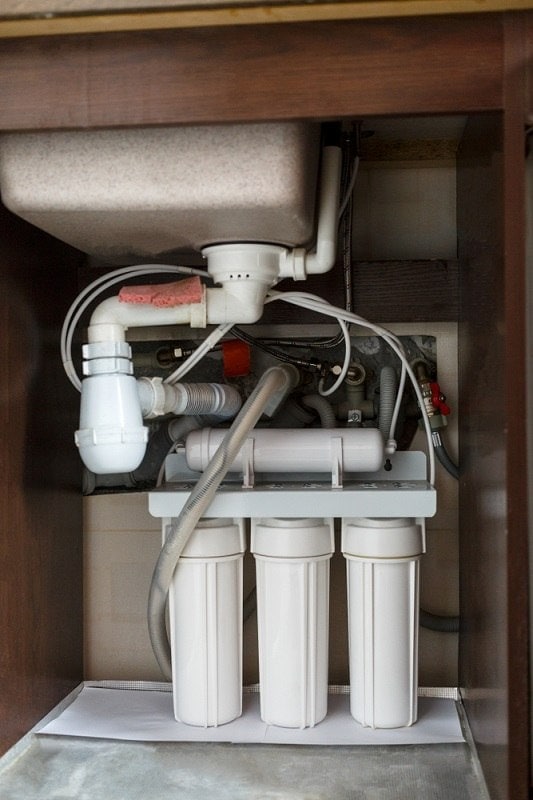
Related Read: 10 Best Countertop & Portable Reverse Osmosis Systems – Reviews & Top Picks
Whole House RO System Pricing
An RO system that filters the water for your whole home is going to cost substantially more than a point of use system on a single sink faucet. Prices for this type of system can range dramatically. On the low end of the spectrum, you might manage to pay as little as $500 for the system with another $500 spent on installation. Larger commercial systems can cost more than $20,000, but these are generally reserved for hotels, restaurants, and breweries.
Related Read: 9 Best Whole House Reverse Osmosis Systems – Reviews & Top Picks
Should You Hire a Professional for Installation?
If you’re the gung-ho DIY type and you’ve got a good set of tools and some basic DIY skills, then installing your under-sink RO system will be no big deal. However, a point-of-entry system that filters the whole home’s water is a different beast entirely. These systems can be far more complex and will generally require a professional for installation. You can attempt it yourself, but if you make a mistake, you could risk causing catastrophic water damage, which could add up to a very expensive accident.
Which Is The Best for Your Home?
Every situation is different, and what’s best for one person might not be a good fit for you. If you’re still unsure about which of these systems is a better bet for you, then you should consider two main factors: price and hassle.
A single-tap RO system is going to be cheaper and less hassle. You could install it yourself and it won’t require any major plumbing. Whole house systems often require extensive plumbing, and you’ll probably need to hire a professional to install it. These systems are already far pricier, but you’re getting some major benefits by having RO water flowing through the whole house.
If you’re willing to deal with the higher cost and hassle of purchase and installation to get those benefits, then the whole-house system is the way to go. On the other hand, if you just want endless drinking water on tap and an easier time washing your dishes, then you’ll be just fine with a single-sink system.
Conclusion
Depending on your needs, you could spend anywhere from $150-$20,000 getting a reverse osmosis system in your home. Point-of-use systems are installed on a single faucet and tend to be cheaper and simpler. Point-of-entry RO systems filter the water in your entire house, eliminating hard water spots, aiding your cleaning efforts, and offering drinking water from every tap. But you’ll have to pay a lot more for these benefits, and installation can be a major undertaking.
- You might also like: 5 Best Reverse Osmosis System for Hydroponics – Reviews & Top Picks
Featured Image Credit: Nomad_Soul, Shutterstock
Contents



